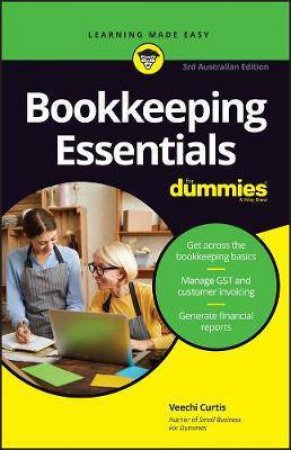

- #Bookkeeping and accounting essentials how to
- #Bookkeeping and accounting essentials update
- #Bookkeeping and accounting essentials software
- #Bookkeeping and accounting essentials code
Now, general ledgers are mostly virtual-instead of jotting down transactions on a piece of parchment with a quill and ink, business owners enter and organize transactions with a spreadsheet or with bookkeeping and accounting software.Įvery time you perform a financial transaction-for instance, make a sale, accept a client's invoice, or pay a bill-you should record that transaction in your general ledger.
#Bookkeeping and accounting essentials how to
We'll show you examples of how to record a transaction as both a credit and debit later on.Ĭenturies ago, businesses would record their financial transactions in a physical book called the general ledger (GL). If you choose to use double-entry bookkeeping-and we strongly suggest you do!-you'll record each transaction as a credit and as a debit. (One notable exception is FreshBooks's cheapest plan, which offers single-entry only-which, frankly, we don't love.)
#Bookkeeping and accounting essentials software
Plus, nearly all bookkeeping and accounting software use double-entry accounting anyway. No matter how much money you bring in a month, we generally recommend double-entry accounting as a better choice for most small-business owners. Since you make two entries per transaction, you're better equipped to catch small mistakes in your record before they turn into major financial problems. This method can work for freelancers or sole proprietors with no more than one or two business transactions a month.īut single-entry bookkeeping is less accurate than double-entry, which has you record each transaction twice: once as a debit and once as a credit. It requires you to record each financial transaction just once in your overall bookkeeping record. Single-entry bookkeeping is the simpler bookkeeping choice. You'll need to choose a method before you can start keeping your financial record, since the method you choose determines how and where you record each financial transaction.

There are two main bookkeeping methods: single-entry and double-entry. A financial expert can give advice specific to your unique business and give you a more in-depth look at basic bookkeeping principles. Along with reading this page to get a quick bookkeeping overview, we always recommend meeting with a CPA (certified public accountant) or bookkeeper before you open your doors. But whether you plan to do bookkeeping yourself or outsource it to an accountant, it pays to understand the basics of bookkeeping.īelow, we'll break bookkeeping down to its most basic principles.
#Bookkeeping and accounting essentials update
( Free bookkeeping software can help you save money if you're just starting out.)Īlternatively, in-house or outsourced bookkeepers can update your books for you, typically for a monthly fee. Fortunately, most small-business bookkeeping software was made specifically for non-accountant small-business owners. If you've never worked in finance before, small-business bookkeeping can feel overwhelming. After all, if you don't know how much you're making or where that money is going, you'll have a hard time finding ways to expand your profitability. Good bookkeeping is foundational to running a profitable business.
#Bookkeeping and accounting essentials code
Please contact the instructor directly for a discount code before ordering the textbook.Bookkeeping is the process of recording your business's financial transactions so that you know exactly how much you're making and where your money is going. To complete the homework assignments, the instructor provides each student with access to a free QuickBooks Online account, good for one year. In this course, we cover many of the objectives covered on the QuickBooks Certified User (QBCU) exam. Participants also discuss how to reconcile bank and credit card transactions and what key financial statements are needed to review to understand the health of your business. Management of basic transactions such as invoicing customers, writing checks, and paying bills is also covered. This course covers how to set up a business in QuickBooks Online, including how to create the chart of accounts, vendors, customers, and products and services. Ideal for business owners, office managers, and bookkeepers, participants use a sample company to get hands-on experience with navigating through the program. This course teaches participants how to use QuickBooks Online, the cloud-based version of QuickBooks.


 0 kommentar(er)
0 kommentar(er)
